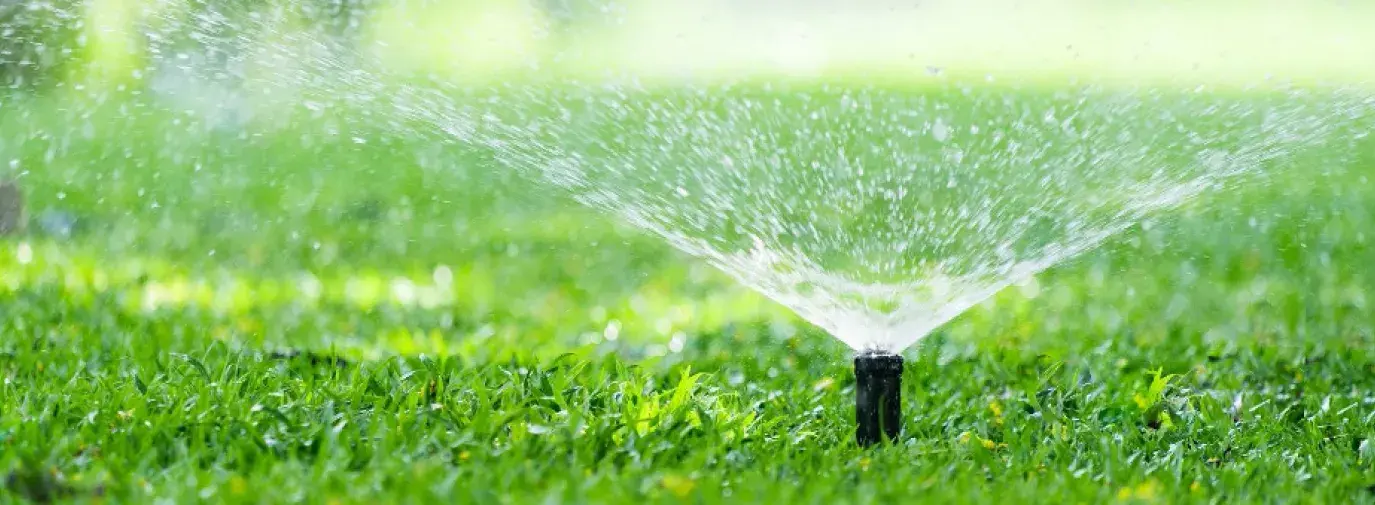
Written by Jeremy Yamaguchi, the Founder and CEO of Lawn Love.
Some of my favorite memories as a child are playing on my grandparents' front lawn. I remember how expansive it seemed, and I loved the smell when it was freshly cut. My grandpa took great pride in his perfectly manicured grass as did all the neighbors; it was a unifying sense of pride for the neighborhood. I still get a rush of nostalgia when I think back on those times, even as I see the need for change in this industry.
Today, over 80 percent of Americans have lawns. They became popular in the late 19th century with the advent of the lawn mower—a lush green lawn was a symbol of prosperity and the American Dream. However, rapid population growth and a better understanding of their environmental impacts have many reconsidering this tradition.
Lawns are Water Guzzlers
As vast regions of the western United States move into the grip of what Science Mag calls the first mega drought observed in 1,200 years, we must look critically at our traditional American lawn.
Turf grass is the country’s largest irrigated crop—three times larger than any other—covering an area larger than the state of New York and demanding enough water every year to fill the Chesapeake Bay. According to the EPA’s nationwide estimate, that’s 9 billion gallons a day to keep our grass green.
Outdoor water use often accounts for half or more of all residential water demand, especially in the hotter inland areas where population growth is fastest. We continue to see outdoor water usage rise as population growth drives development and single-family home construction. This is all happening against decreased water supply as global temperatures increase and freshwater basins dry up.
Lawns are Polluters
Water usage isn’t the only environmental issue associated with the traditional American lawn. Water pollution and climate emissions are also linked to our grass obsession.
Homeowners use up to 10 times more chemical pesticides and fertilizers per acre on their lawns than farmers use on crops, and these chemicals can end up in our drinking water and waterways, harming human and ecosystem health. Production, transportation, and use of these chemicals also contribute to the climate crisis.
Americans use 800 million gallons of gas every year for lawn equipment and spill 17 million gallons just trying to refuel mowers—that’s more than was leaked by the Exxon Valdez oil spill in 1989. Hour per hour, gasoline powered lawn mowers produce 11 times as much air pollution as a new car. This is not sustainable.
Alternatives to the American Lawn

As we face the climate crisis and water shortages, many Americans are looking for ways to get rid of their lawn.
Xeriscaping, a type of drought-tolerant landscaping that requires little or no irrigation, can reduce home water usage and costs by 50 to 75 percent. Well-designed, drought-resistant xeriscaping might include decorative rocks and beautiful, blooming native plants that are very low-maintenance and have a natural beauty that can certainly rival a green lawn. In California, many cities offer residents conservation incentives to replace their lawns with xeriscaping, and it works! In Novato, CA, for example, the city’s water department estimated that homeowners who chose xeriscaping saved 120 gallons of water a day.
Replacing grass with a meadow is another option that requires no fertilizing, little to no supplemental watering, and minimal mowing, making this an appealing low maintenance option. Meadows provide habitat to pollinators and are capable of capturing carbon.
If you’re a fan of local foods, you can also try your hand at gardening or foodscaping—a type of home gardening that puts food-bearing plants front and center to maximize production while keeping aesthetics in mind. Replace your grass with a garden using Climate Victory Gardening practices and your yard goes from part of the problem to part of the climate solution.
These alternatives to the traditional expansive green lawn and their related environmental and cost benefits can’t be ignored. Those who care about the planet and the people on it will come to see that the scientific evidence is irrefutable. We can help solve some of these environmental issues if we summon the collective will.
The yards of the future will feature wildflowers, native grasses, succulent greenery, and edible plants, creating a space that’s far more interesting and better for our planet than just a plot of green grass.






